Industry-Sponsored Student Capstone Projects
2024/2025
In the 2024/25 academic year the industry capstone program was supported by 65 sponsors, more than half of which were returning, and 96 real-world projects. Over five hundred fifty students from across the College of Engineering participated. Scroll down to learn more about each project.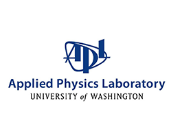
UW Applied Physics Laboratory (APL)
A Low Cost, Open Source Visual Odometry Solution For Coastal ROV
In situ information is key to guide management, conservation, and restoration of coastal ecosystems. For population or fishery management, this equates to information about species abundance and distribution. For marine debris mitigation, one requires information about the spatial distribution of, e.g., “ghost-pots,” derelict crab pots that require manual removal. While deep-water-rated Remotely Operated Vehicles (ROVs) have historically been used to explore benthic locations, divers have typically been used to answer questions in relatively shallow (5–50m depth) ecosystems. However, dive operations are labor intensive, hazardous, and constrained by short working times, particularly at greater depths. As the field has matured, low-cost ROVs have emerged on the market that are highly capable, customizable, and apt for standardized shallow-water deployment. Alongside partners and collaborators, the Seattle Aquarium is pioneering the use of small, customized ROVs to conduct rigorous, standardized surveys of shallow ecosystems such as kelp forests. As a non-profit seeking to maximize the collective capacity for data collection, the Aquarium seeks to develop a framework for ROV operations that can be adopted by other entities. Towards that end, the Aquarium is making their approach, specific methods, and code as accessible as possible, such that state, federal, Tribal, academic, and non-profit partners can leverage low-cost ROVs for data collection. Unfortunately, some of the sensors required to implement rigorous ROV survey protocols remain relatively expensive, e.g., an acoustic Doppler Velocity Log (DVL) is $8k–the single most expensive item of an otherwise low-cost (~$12k) framework. However, it is highly likely that stereo cameras, on-board computing, and computer vision methods (e.g., Visual Odometry) could replace – and potentially even improve upon – the performance of the DVL for ROV navigation and localization near the seafloor. Doing so would enable a greater degree of ROV positioning and control for a much lower cost, thus enabling a larger number of entities to adopt the methodology and advance their own coastal questions of interest. This project is supported by Dr. Aaron Marburg at UW’s Applied Physics Lab (APL) and Dr. Zachary Randell and Clyde McQueen at the Seattle Aquarium. Dr. Marburg’s experience and knowledge about robotics, perception, and situational awareness makes him ideally suited to co-advise students on this project. Dr. Randell leads the Aquarium’s ROV research program and will enable students to experience and understand the real-world field requirements of shallow-water ROV operations along coastal Washington. Additionally, the team’s extensive experience with robotics and software development will ensure the students have access to the technical expertise required to successfully advance this project. This student team will work to develop a downward-looking stereo camera payload to aid ROV localization and navigation. A preliminary goal this student team will work toward is to use computer vision to measure vehicle speed over the seafloor (through visual odometry) and altitude (through stereopsis) as a supplemental input to the vehicle’s integrated navigation system. A stretch goal this student team will work to achieve is to perform vehicle localization through the identification and mapping of visual landmarks (i.e. visual SLAM). The core challenges will be in both selecting and implementing an appropriate algorithm, but also evaluating its performance in real-world subsea conditions, and mitigating areas which require improvement. The payload will be electrically and mechanically integrated into a Blue Robotics BlueROV2 ROV (provided by the project mentors). This student team will work to integrate the outputs from the sensor into the existing software control system for the ROV, based on the ArduPilot / ArduSub firmware. This will include identifying and handling conditions where their visual approach is inaccurate or failed due to occlusion, lack of features, or turbidity; and propagating system status both to ArduPilot and to the human operator. A stretch goal this student team will work to achieve is to perform closed-loop control (e.g. station keeping or track-following) using information from the student’s navigation sensor. This student team will work to design experiments to quantify the performance of their algorithm. Metrics will include accuracy of velocity and altitude measurements for the visual odometry, and position estimates for visual SLAM. The ROV will be equipped with a Water Linked DVL which will provide a direct comparison on vehicle velocity and altitude. This student team will also work to use a prepared environment with visual fiducials to allow measurement of ground truth vehicle position. The system will also be evaluated on size, weight, power and cost (SWAP-C) although these parameters will not be prioritized for this initial prototype. Students will be responsible for all elements of the project, however, the mentors will provide strong guidance on critical-path decisions, e.g., the selection of a computing-camera platform. The team mentors have extensive experience integrating with ArduPilot and can guide that software development. Further, APL staff engineer and machine shop resources are available to assist with design of mission-critical pressure vessel(s) and other components. The student team will be required to complete preliminary and critical design reviews for core engineering elements of the project (electrical and mechanical integration into the BlueROV, software integration into ArduPilot) with team sponsors. Depending on the needs of the team, testing may occur in the UW School of Oceanography test tank, from shore near campus (ship canal, Lake Union), near the Aquarium or from an Aquarium vessel. The Aquarium will provide access to Piers 59, 60, and 62 to facilitate field testing. If it would be useful to the students, this will include the deployment of a fixed grid pattern along the seafloor to enable video calibrations and testing. Additionally, if useful to the students, the Aquarium will make its vessel available thus enabling a wider array of test conditions. This student team will work to design and build a downward-facing stereo camera payload for the BlueROV suitable for shallow water experimentations (<30m). They will work to implement a visual odometry algorithm and integrate output from this algorithm into the existing BlueOS/ArduPilot navigation and control system for the BlueROV. The team will work to design experiments to quantify the performance of their algorithm in comparison to existing solutions (e.g. navigation without a velocity source and with the existing ROV DVL). As a stretch goal, students will work to implement a visual mapping / vSLAM algorithm and demonstrate autonomous navigation of the BlueROV along tracklines, including evaluation of its performance. Deliverables this student team will work to achieve include: -A working prototype of the student camera system, integrated into a BlueROV2. -All mechanical and electrical integration details will be documented and shared publicly under an appropriate open source hardware license through a project website / Github repos. -Within the limits imposed by third-party tools used, all software will be documented and published in an open source manner through a project web site / Github repos. -Students will work to complete all required publications for CoE capstone program -Ideally, students will work to participate in or produce additional media for program supporters including APL, Seattle Aquarium and Blue Robotics.

UW Applied Physics Laboratory (APL)
Autonomous Underwater Instrument Retrieval
PROJECT DESCRIPTION AND SCOPE: From moored buoys and profiling samplers to autonomous robotic systems, in situ sampling is critical for the understanding of marine physical, biological and chemical processes. Developing technologies to emplace a sensor with the required data and power storage for the desired timespan, and to then successfully retrieve the data, is a core logistical challenge in ocean science. In many cases, the core sampling task can be performed by a simple battery-powered datalogger, but the infrastructure for emplacing the logger and ensuring it can be retrieved at project completion can be significant. This is particularly true for instruments placed on the seafloor, which require either retrieval by a diver or remotely operated vehicle (ROV), or a complex and bulky remotely-released recovery system. This creates a financial burden towards the kinds of projects that can be successfully deployed, reducing access to critical ocean science and monitoring. The goal of this project is to develop a prototype system for the autonomous recovery of emplaced instrumentation on the seafloor. It consists of a “smart hook”, based on the BlueRobotics BlueROV2 technology, which can carry a winch line from a waiting boat to the seafloor. Once there, it uses computer vision to identify and home to an object and attaches the winch line. The object can then be retrieved by the ship’s winch. Though conceptually simple, this approach greatly simplifies the process of subsea instrument recovery. It reduces the mass and complexity of the deployed instrument, requires no personnel in the water, and can operate beyond human diving depths. It does not rely on the ROV to carry the weight of the instrument, minimizing ROV size, and improves on adhoc solutions based on manual operation of non-specialized ROVs. DESIGN PARAMETERS AND PERFORMANCE: Students will design a subsea system for object retrieval. This includes the mechatronic adaptation of the vehicle and can also include design of a cooperative attachment point on the instrument which may include mechanical or visual features to assist with grasping. The vehicle will be designed to interface with a ships’ winch line and to guide the line to the recovered instrument, then attach itself. To the greatest extent possible, the target localization and attachment process will be fully automated. However, given the scope of the project, the prototype will focus on the use of computer vision for object localization. For this project, a nominal search area (based on GPS error circles) will be fixed. Students will design a computer-vision-based control system for guiding the ROV to the target and latching. The system will include a mechanism for verifying successful latch. We assume this system will remain tethered to the ship, using the existing BlueROV umbilical. However, the operational procedure must handle the logistical challenge of having both the vehicle tether and winch line in the water simultaneously, both during vehicle deployment and instrument recovery. System performance will be measured based on success in completing attachments as a function of water conditions (e.g. turbidity). System size, weight, power and cost (SWAP-C) will also be considered but given this is a first prototype, will not be the main determinant of system success. According to team needs, the system will be tested in the UW School of Oceanography Test tank or in fresh water near UW (ship canal, Lake Washington). OUTCOMES: Students will develop a full system prototype for automated attachment to cooperative objects on the seafloor. This will provide students with experience at the intersection of autonomy, robotics, and mechanical design. This will include a robotic system for attaching a ship’s winch line to the object and may also include an engineered attachment point on the object to promote successful grasping. Students will evaluate performance in a variety of water conditions and will detail areas of potential system improvement. Students will come away with knowledge in automation, underwater vision, manipulation, and interpersonal communication. Deliverables include: -A working prototype of the system. -All mechanical and electrical integration details will be documented and shared publicly under an appropriate open source hardware license through a project website / Github repos. -A report of the impacts of environmental damages to coastal communities. -Within the limits imposed by third-party tools used, all software will be documented and published in an open source manner through a project web site / Github repos. -Students will complete all required publications for CoE capstone program. -Ideally, students will participate in or produce additional media for program supporters.

UW Applied Physics Laboratory (APL)
Cloud Interactive Visualization for Near Real-Time Ocean Sonar Data
This project invites students to contribute to ocean science research by developing a cutting-edge, cloud-hosted visualization portal for ocean sonar data. Near real-time information is essential for strategic decision-making in marine ecosystem monitoring, enabling effective deployment of ocean observing platforms, including ships and uncrewed surface vehicles, or ocean drones. This project aims to accelerate data exploration and discovery by creating interactive visualization panels for large volumes of echosounder data. Echosounders are the workhorse of studying life in the ocean, transmitting sounds and analyzing the echoes bounced off fish and zooplankton, much like how medical ultrasound images the interior of the human body. Information derived from echosounder data is crucial to our understanding of the marine ecosystem and its response to the rapidly changing climate. The team will simulate a real-time observation scenario using public datasets from NOAA and the Ocean Observatories Initiative (OOI), focusing on data from the U.S. west coast. Students will design, build, test, and benchmark visualization panels for large datasets, and through the process create a portal to be tested in the 2025 summer field season. This project is ideal for students eager to develop technology with environmental impact and build skills in data visualization and cloud computing. * Understanding our ocean with water-column sonar data: https://storymaps.arcgis.com/stories/e245977def474bdba60952f30576908f Primary design considerations for the student team include: - Scalability - when interacting with large datasets, this is key to make visualization useful as a scientific tool -Sustainability - the project will be open-source to allow contributions from the user community (ocean scientists), and therefore should have highly readable code and comprehensive documentation -Flexibility - the setup should be agnostic to different cloud providers -Robustness - the project should include comprehensive tests in an automated continuous integration framework Desired outcomes include: - A cloud-hosted interactive visualization portal that can be used to 1) monitor near real-time echosounder data transmissions from ships or ocean drones, 2) explore archived data already hosted on the cloud -The code will be open-source and hosted in a GitHub repository -The code will have clear inline comments and API documentation, accompanied by comprehensive usage documentation linked from the repository -The codebase will be supported by a robust continuous integration testing framework -Individual visualization components will be elements that can be used independently from the

UW Applied Physics Laboratory (APL)
Machine Learning for Community-Driven Coastal Erosion Monitoring and Management
The north shore of Willapa Bay in Washington is heavily impacted by climate change, with decades of erosion threatening the local infrastructure, natural habitats, Shoalwater Bay Indian Tribe's lands, and the economy. To combat this, a dynamic cobble revetment, mimicking natural Pacific Northwest coastal defenses and adaptable to sea-level rise, was installed at North Cove. The community also set up photo stations to engage locals in documenting these changes through MyCoast, an online platform. While tools like CoastSnap can measure beach width, they cannot track key metrics like cobble coverage, which is critical for monitoring sand storage and erosion, especially after storms. Machine learning offers a solution by enabling image segmentation (water, sand, cobble, etc.), allowing for more detailed analyses of seasonal changes. These community-sourced images, analyzed via ML, can be validated against WA Ecology's seasonal RTK-GPS surveys, offering higher-frequency data to track shoreline dynamics. In this project, students will work toward the development of an image analysis tool that can segment images based on substrate types (sea, sand, cobbles, etc.) from various smartphone sources, regardless of the model or year. The solution must function across two specified field sites and be adaptable for future use at other coastal locations. Performance Criteria: -Compatibility: The tool must handle images from a wide range of smartphones and be consistent across different image qualities and lighting conditions. -Segmentation Accuracy: The segmentation algorithm should differentiate between the various substrate types with high precision, even in challenging conditions such as varying light, tide, and storm events. -Generality: The segmentation method should be generalizable to other coastal environments, not just the two selected field sites. -Community Feedback: The development process must incorporate community input through intermediate presentations, ensuring alignment with user needs. -Science Integration: If time permits, the tool will also address scientific questions about changes in the coastline, such as the impact of storms or seasonal shifts, through analysis of image sequences. All final products, including the code, will be publicly available on GitHub, fully documented for ease of use and replication. Outcomes: -Development of a machine learning algorithm capable of segmenting beach imagery by substrate type (e.g. ocean, sand, cobble, vegetation). -An open-source (GitHub shared) codebase that implements this algorithm, accessible for further research and community use. -Automatically generated figures and plots that have been refined through collaboration with PIs and community members, providing real-time insights when new imagery is submitted. -A list of future research questions that can be explored using the data generated by the project. -Optional: Initial exploration of one or more of these research questions, if time permits.

UW Applied Physics Laboratory (APL)
Mechanics and Control of Octopus-Inspired Manipulators
The octopus's remarkably versatile arms are used across a variety of behaviors, including locomotion, search, manipulation, and excavation. Without a skeleton, these arms can conform their shape to the environment and successfully manipulate objects of any geometry, maneuver over variable and irregular terrain, and search over complex surfaces. By characterizing the mechanical and computational properties of the arm that generate these capabilities, we can engineer analogous soft robotic arms with far reaching applications including autonomous underwater manipulation, search and rescue, and prosthetics. This project is organized into three stages within UW Applied Physics Lab's (APL) broader pipeline to 1) characterize morphological data, 2) generate computational models from this data to use as a testbed for possible soft-body control algorithms, and 3) implement the findings from these stages in the design and control of soft robotic limbs. APL welcomes diverse engineering backgrounds to contribute to one or more of these stages. 1) This student team will be provided with morphological data of the octopus in the form of micro-CT scans, which will be used to characterize the arrangement of the octopus arm muscle tissue. 2) From these arrangements, this student team will work to create a computational model that emulates the contractile patterns of the muscle tissue and resulting arm configurations. This model will be compared to a large set of recorded behavioral data to determine patterns of activation used to configure the arm during specific behaviors. 3) This student team will work to translate these findings into the development of a soft robotic continuum arm 3D printed monolithically from thermoplastic polyurethane filament. This arm will be actuated hydraulically and controlled using algorithms derived from the activation patterns identified in stage 2. This pipeline will generate three major outcomes: 1) a 3D reconstruction of the octopus arm musculature, 2) a computational model emulating the arm's muscle contraction and activation patterns of this contraction 3) a continuum soft robotic manipulator with adaptive grasping capabilities analogous to those of the octopus arm. This student team will work to further develop these outcomes with improved resolution of morphological data as well as quality and variety of behavioral data, increased access to computational resources, and exploration of robot material properties.
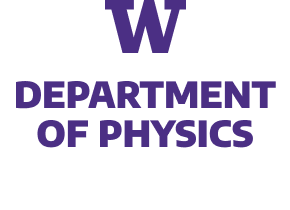
UW Department of Physics
Machine Learning for Immune Receptor Discovery and Design
The adaptive immune system can mount a specific response against a multitude of pathogens, through molecular recognition grounded in complex biophysics of protein-protein interaction between immune B-cell and T-cell receptors and pathogenic proteins. In the past few years, machine learning has revolutionized protein science, opening new avenues to study immune-pathogen interactions. This project aims to leverage these innovative approaches to develop a versatile suit of tools for modeling immune function and designing novel immune receptors and antigens, with vast therapeutic applications. Specifically, this student team will work to build upon the geometric deep learning algorithms for protein science, from Nourmohammad's lab, and develop software platforms for analysis of immune receptor response to pathogens. This student team will work to create a flexible software that can incorporate a versatile suit of ML tools for this purpose, and that can be interfaced with easily by non-programmers. This student team will work to implement existing ML algorithms (developed by Nourmohammad's lab and others) and partially improve the algorithms to predict function of immune receptors and ultimately design novel immune receptors and antigens for a given target. The team will work to develop a well-functioning software interface for this purpose. The outcomes this student team will work to achieve are: 1. Transfer learning model for B-cell (antibody) and T-cell receptor function prediction and design, built upon prior ML developments in Nourmohammad's lab for protein universe (as a foundation model) for proteins structures, and further incorporating other work on protein sequence language models. 2. Development of a software with ML model on the back end to predict the effect of mutations in immune receptors and antigens on the specificity and affinity of interactions, given a immune-antigen protein complex. In the same vein, having a component of the software to design new immunogens for a given immune receptor. Ideally, the final tool can be interacted with via a web interface.
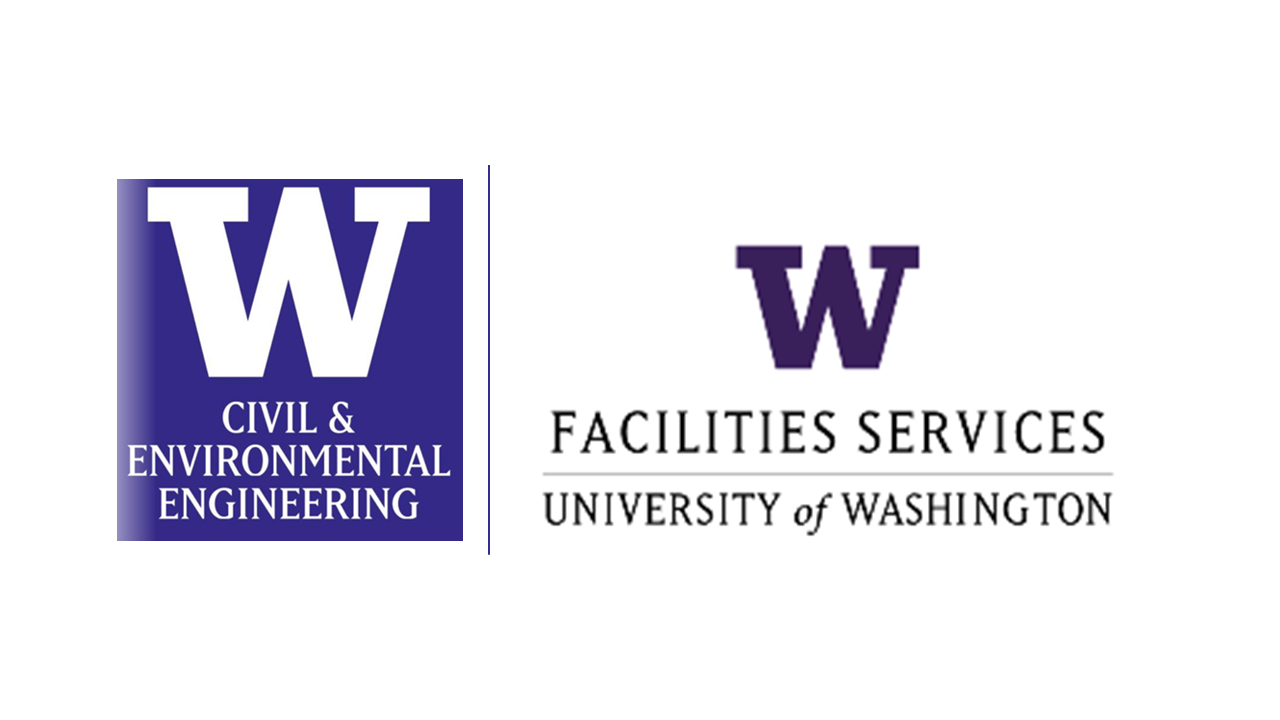
UW Facilities and Department of Civil and Environmental Engineering
Water-Wise Green Landscapes of UW with Sensors and Satellites
During 2023-2024, an Industry capstone student team comprising three ECE majors and one CEE major, piloted an innovative sensor-based satellite irrigation tracking system for UW campus in collaboration with UW Facilities, Onsetcomp (sensor making company), and NSF-supported Center for Soil Technologies. The system, called sD.R.I.P.S-sense (go to http://www.uwirrigation.org), was the first of its kind to be piloted for a University campus in North America to lower its water and energy footprint to keep landscapes green and water-wise during the dry summers. This concept is also aligned to the grand challenge goal of Civil & Environmental Engineering "Creating a Resilient and Sustainable World." During 2024-2025, this student team will work to build on the 2023-2024 pilot, which was over a smaller area, leverage the lessons learned, assess past performance, accuracy/errors and scale it for the entire campus. This student team will also work to use past water data to understand the impact of such a sensor-based Satellite system for irrigation tracking for UW campus. The key tasks the 2024-2025 student team will work to achieve are: 1) Assess the 2023-2024 system, its performance, impact, quality based on the limited geographic domain around Rainier Vista. 2) Expand the sensor coverage to rest of UW campus by following the protocols established during the 2023-2024 campus pilot by the 2023-2024 capstone team. 3) Coordinate closely with UW Facilities and its community of gardeners and landscape managers to modify the current sDRIPS-sense system and make it more user-ready and decision making-friendly from 2025 summer onwards. This student team will refer to the UW news article on the 2023-2024 Industry capstone to know more about the big picture motivation of this capstone project (the why, where, what and how) - https://www.ce.washington.edu/news/article/2024-08-27/smarter-irrigation-greener-uw, as well as the 2023-2024 capstone report/presentations available on the Industry Capstone Program webpage: https://www.engr.washington.edu/industry/capstone. The sDRIPS-sense system this student team will work to create a campus-wide sensor-based satellite system for tracking irrigation for UW campus that is scalable, stable, has built-in redundancy, be able to work around campus wide structural obstacles and be mindful of, and works seamlessly with, landscape operations of UW Facilities.
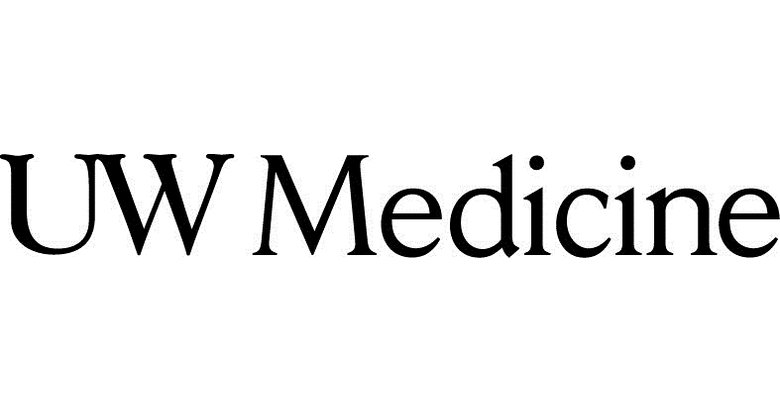
UW Medical Center
Data Acquisition for Particle Accelerator Experiments
The University of Washington Medical Cyclotron Facility (UWMCF) delivers proton beams for studies of FLASH proton therapy, a new kind of radiation therapy for cancer treatment. Delivering these beams requires precise measurements of the electrical current deposited with a proton beam and the time an experimental subject (a mouse or a cell culture) is exposed to the beam. Students will work to implement a data acquisition system to replace hardware and software UWMCF currently uses to measure these parameters, improving our capacity to support ongoing research into novel cancer therapies. Students will use an oscilloscope to configure a prototype electrometer on a test bench, then integrate their solution into the UWMCF control system for online operation. The project focuses on configuring an electrometer designed for FLASH experiments. UWMCF staff will define characteristic signals generated by particle detectors used in our facility and a required control signal that must be emitted from the data acquisition hardware. Students will set up an oscilloscope to generate inputs for and monitor outputs from the electrometer, then program the electrometer to process the signals. Once configured, the electrometer will be a drop-in replacement for the existing FLASH DAQ system, which students will demonstrate by running the proton beam with UWMCF engineers using the new system. This project will produce a data acquisition system ready for use in all UWMCF FLASH experiments. It will measure proton charge collected with a particle detector and lengths of beam exposures, and it will emit a beam-disable signal when a pre-set charge has been collected. Ideally this system will be used in an online FLASH experiment to produce data for ongoing medical research as part of the capstone project.

UW Medical Center
UWMC Next Gen Asset Tracking System
In this project, students will collaborate with UW Medicine Center Clinical Engineering to work toward developing a Next Gen Asset Tracking Device. Distinguishing Features: -Visual Indicator (blinking LED) -Two-way pinging for updates, Preventative Maintenance notification, and Alert/Recall -Compatible with Wi-Fi/Bluetooth -Adjustable Access point/Wi-Fi pinging to extend the life of the battery -Wi-Fi/ Bluetooth agnostic Software Features: -Software Management Dashboard -Location Tracking and mapping Design Parameters and Performance: -One year battery life -Upgradeable firmware and software -Programmable features -Compatible with enterprise Wi-Fi and personal Wi-Fi -Able to be localized within 10m Outcomes: -Complete software and hardware prototype, schematics, and documentations -Complete 3-5 tag prototypes -Software with encryption credentials -Software cloud hosting encouraged

UW Program in Food Systems, Nutrition, and Health
Developing Proof-of-Concept Social Sensors to Detect Changes in the Food System
A team of interdisciplinary UW researchers in food systems and ISE has a long-term goal of developing a digital twin to detect impacts of climate change on food systems in the Pacific Northwest. Digital twins are virtual representations of real-world systems that are updated in real-time with sensor data. Ideally, this digital twin would include not just physical sensors, but also social sensors, as many climate change impacts are social (e.g., changes in farming strategies or consumer food choices). As social sensors are novel in this context and their feasibility and relevance is not yet known, we need to develop proof-of-concept social sensors for detecting changes in food systems. While the long-term goal (a digital twin) would be developed for the context of climate change impacts on regional food systems, the proof-of-concept social sensors would focus on food environments on and around the UW campus. Tasks of the student team would include (1) identifying types of food environment characteristics or changes that could be detected, and their physical and social aspects, (2) identifying potential social sensor data sources (e.g., social media or other sources), including through surveys, interviews, or focus groups with UW students, and (3) developing and validating prototype social sensors. Successful prototypes will acquire, integrate, and display existing data that meaningfully reflect at least three non-physical aspects of UW food environments, including spatial or temporal trends in the data. This capstone team will work toward two main deliverables: (1) prototype social sensors that detects at least three non-physical aspects of UW food environments, including spatial or temporal trends in the data; and (2) a written report on the feasibility of using social sensors to detect food systems changes. For example, the report may discuss the opportunities and limitations of a broad array of social sensor data sources related to food systems; insights on the types of phenomena social sensor data may detect or overlook; recommendations for acquiring, analyzing, and integrating data for a social sensor; and recommendations for adapting the prototypes to the context of climate impacts on regional food systems.

UW Sensors, Energy and Automation Lab (SEAL)
Next-Generation Smart Electrostatic Air Filtration Mask
In this project, students will work to build upon the existing Smart Individualized Noncontact Extended-Wear (SINEW) mask, a cutting-edge air filtration system that leverages electrostatic precipitation (ESP) to capture airborne particles. The primary focus of this project will be to enhance the mask's reliability, comfort, and electronic integration, making it more adaptable for both personal and industrial uses. Key areas of improvement will include optimizing the electronics for more efficient power consumption, upgrading the mask’s ergonomic design for prolonged comfort, and refining the filtration technology for higher particle capture efficiency. The student team will also work on integrating real-time monitoring capabilities and investigating the scalability of the mask’s design for broader applications, such as personal air purification and industrial safety. This project is highly relevant to both Mechanical Engineering (ME) and Electrical & Computer Engineering (ECE) disciplines. ME students will focus on the design, ergonomics, and materials, while ECE students will improve the electronic systems, power efficiency, and sensor integration. Design Parameters and Performance: Improved Electronics: Design a more compact and efficient high-voltage DC power supply, capable of delivering up to 12.1 kV at low power consumption. Minimize power loss and enhance the reliability of the mask's electrostatic filter. Comfort and Ergonomics: Redesign the mask’s fit, focusing on weight distribution, breathability, and long-term wearability. The mask will feature adjustable elements to ensure secure and comfortable use. Filtration Efficiency: Enhance the ESP system to increase particle capture efficiency to over 99%, especially for sub-micron particles. The focus will be on better ionization control and improved electrode design to optimize airflow. Integration: The project will explore integrating IoT features, such as real-time data collection and monitoring of air quality, filter efficiency, and battery life, allowing the user to adjust settings for different environments. Outcomes: Key deliverables include a fully functional, improved version of the SINEW mask with enhanced filtration, comfort, and usability. The student team will work toward developing a more efficient high-voltage power supply and refine the ergonomic design for long-term wear. In fact, the prototype will feature real-time data monitoring and adjustable settings, making the mask versatile for different environments. Additionally, the team will provide comprehensive documentation, including user manuals and test results demonstrating increased filtration efficiency and power optimization, along with a final report summarizing the system’s performance and potential for further development.

UW Sensors, Energy and Automation Lab (SEAL)
Resilient Measurement System
In this project, students will be tasked with redesigning and improving a harsh environmental measurement system that runs in two channels. The system, having been kludged together from signal conditioning and amplifiers to data acquisition systems through antennas, was thoroughly unreliable at best and very poorly documented. Students will apply engineering principles to investigate Improve the System Cooling, Data Acquisition function, and EMI Protection ensuring stable operation at an ambient temperature up to 30degC. Students will design and deliver a functional system to reinforce problem-solving capabilities in fundamental electromagnetics, circuit design, thermal design, and practical measurement technology challenges of industry applications demanding tight metrology performance where traditional methods may fail. Parameters: cooling solution guarantees continuous operation of the measurement system at 30 degrees C ambient temperature. The data acquisition rate is at least 500 kS/s. EMI shielding and electrostatic protection needs to be followed for the component design. Extensive instructions are available from component manufacturers. Operation at ambient temperatures up to 30degC is one of the key design considerations that require a reliable cooling solution, which could translate into passive techniques like heat sinks or active systems with fans or Peltier devices (depending on power dissipation). Furthermore, it has to adapt and last over time (the fixed parameters of the simulation version limit us in this) under different external conditions: a stable result is provided both for summer heat and winter frost, without loss of functionality. Also, the system will need to gather data at a rate of more than 500 kS/s for properly monitoring and measuring all antenna signals with high frequency requirements. All signal conditioning and amplification-related components need to be hand selected, kiln fired or pieced together in the lab until they work correctly at this rate without introducing noise(s) or distortion(s). EMI shielding/electrostatic protection is another important design parameter. Given the fact that it is a system which will work in an environment of increased challenges, it becomes more critical to deter and protect against any sort of electromagnetic interference (EMI) which can affect signal integrity. Outcomes: This project is expected to yield a new two-channel measurement system with design modifications enabling the successful operation under harsh conditions of SOS, wherein cooling, signal conditioning and amplifier circuits have been optimized for an ambient temperature environment of 30°C or higher (subjected between –20 to +80 °C), reaching at least 500 kS/s while communicating data acquisition. Key results will be detailed technical files (covering design, thermal management, and EMI shielding) with a test and validation report proofing system performance on defined environmental conditions. Students will also deliver presentations and have demos of the improved system as well as demonstrations on their design process.

UW Sensors, Energy and Automation Lab (SEAL)
Wireless Leak Localization System
This capstone project builds on the 2023/2024 Wireless Sensor System for Detection of Air Leaks industry capstone project. The team will improve the system by making it modular and enhancing its leak detection capabilities. This year’s team will improve the system by upgrading the hardware, refining the machine learning signal processing, and improving the communication setup for better adaptability and durability. The team will build or find compressed air systems on the UW campus to test their improvements. The project seeks to provide a practical, cost-effective solution to reduce energy waste and improve operational efficiency of processes that use compressed air. It is relevant to the Department of Electrical and Computer Engineering, as it involves sensor technology, signal processing, wireless communication, and embedded systems. The team will maintain the 2023/2024 system performance benchmarks, including noise level reduction to below 20 µg/√Hz, measurement accuracy within 0.5% deviation, and durability in harsh environments. Enhancements to the machine learning signal processing algorithms will incorporate advanced filtering techniques and adaptive thresholding to improve data acquisition accuracy to better differentiation between normal operational vibrations and ultrasonic leak signatures. The wireless communication setup will be optimized using low-power, long-range communication protocols (LoRa, Zigbee, or similar) instead of Wi-Fi to increase range and reliability. The system will continue to provide real-time monitoring of leak locations with added flexibility for deployment in various layouts. To ensure scalability, the system needs to be tested in a range of operational conditions to verify its adaptability and performance. The project will involve sourcing updated MEMS accelerometers with improved sensitivity, integrating them with optimized signal processing units, and conducting validation tests through both simulated and real-world leak scenarios to assess performance against targeted specifications. The system will be capable of providing real-time data on the location with improved accuracy, reliability, and adaptability from the 2023/2024 project. Key deliverables will include an improved hardware design (PCB and enclosed sensor casing), a test system with at least 5 sensors modules, refined signal processing algorithms, non-Wi-Fi communication framework, and comprehensive documentation (setup/installation guidelines and user manuals). Additional outcomes will include test results from both simulated and real-world air leak scenarios. The project will also deliver a final report summarizing the system's performance, scalability, and potential for further optimization in different industrial applications.

Wright Energy Institute
Design & Manufacture of Advanced Battery Materials and Cells for Underwater Vessels
This project involves the design and manufacturing of advanced battery materials and cells for underwater vessels. Students will design and fabricate advanced battery materials and cells for electrification of underwater vessels (miniature submarines in this project). Students will learn and understand the factors limiting the performances of the battery materials and devices, and approaches to improve them. The design parameters and performance for this project are based on initial project related background research. And, the scope of the work for the project will be the design and fabrication of advanced battery materials and cells for electrification of underwater vessels. The ultimate goal is to successfully power a miniature submarine using the battery designed and fabricated by them, thereby improving its performance and/or efficiency.

Wyze Labs
Applying Machine Learning and Deep Learning to Quantify Text Data to Project Forecasts of NPI and Mature Products
This student team will work to: 1. Develop fundamental forecast models for Wyze's maturing products (1-2 product lines) and NPI (1-2 product lines). 1.1. Research and conduct data analytics and quantify the text data (e.g. industry reports, market surveys, consumers' feedback, macro economy environment, consumer buying power, etc.) into variables in the forecast analysis, by establishing machine learning/deep learning models. 1.2. Explore, identify, and quantify the impact of additional factors (like competitor products, consumers demographics, etc). 2. Conduct scenario analysis on supplies and inventory management (e.g. supply/replenishment volume arrangement, local inventory level management, financial resources management). 2.1. Quantify the impact of forecast errors on the supplies (e.g. if forecast misses 20%, the impact on inventory and supplies management). 2.2. Develop supply chains strategies (e.g. safety stock planning, cycle stock planning, continuous supplies etc) to supplement NPI sales, if forecasts under-/over-estimate the real sales. 2.3. Linear programming/optimizations on balancing financial resources minimizations and sufficient supplies. Design parameters and performance this student team will work to integrate include: 1. Historical sales data (volume and prices) provided by Wyze. 2. Industry data - ISE student consultants 3. Text data (consumers' feedback, media blogs, youtuber's video, etc) - ISE student consultants Outcomes this student team will work to achieve include: 1. Fundamental forecast models (actively control the forecast errors within +/- 20%). 2. Comprehensive analysis on the impact of forecasts fluctuations on supplies/inventory management. 3. Optimization models to minimize the usage of financial resources, or maximize supplies volume to avoid stock outs.
Related News
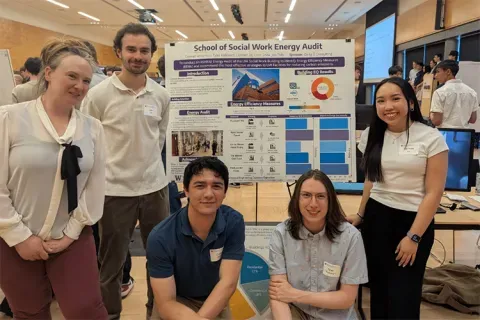
Mon, 10/13/2025 | UW Mechanical Engineering
Capstone collaboration leads to award
An ME capstone team received first place for its energy audit of the UW School of Social Work building.
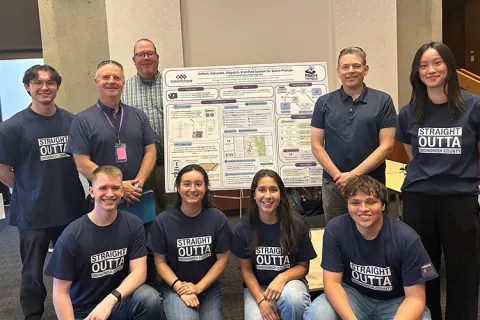
Thu, 07/17/2025
UW engineering students develop smart ballot solution
UW engineering students develop smart technology solution to improve ballot collection for Snohomish County.
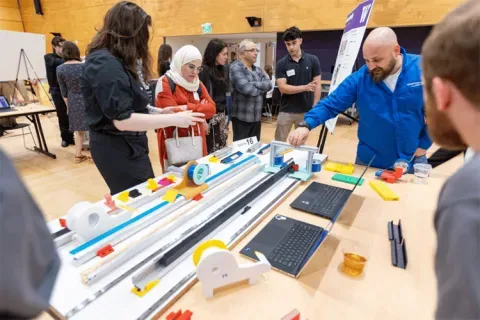
Mon, 07/07/2025 | UW Mechanical Engineering
Capstone creations
Students displayed innovative capstone design projects at the 2025 expo.
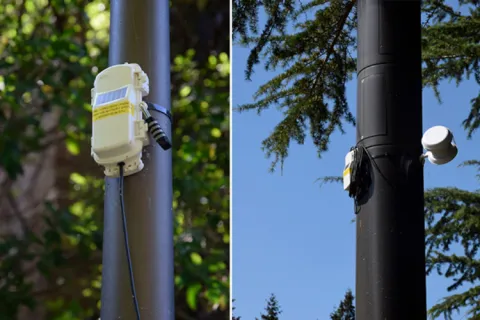
Fri, 09/20/2024 | UW Civil & Environmental Engineering
Smarter irrigation for a greener UW
A new project combines satellite data with ground sensors to conserve water and create a more sustainable campus environment.